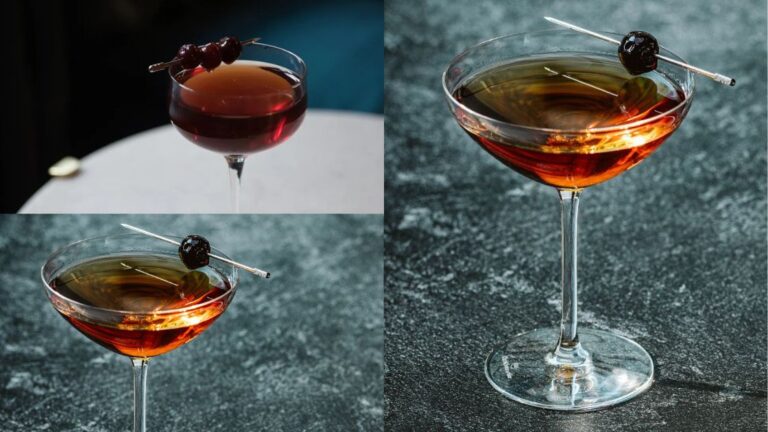Scotch whisky, often simply known as Scotch, is more than just a beloved spirit; it’s a symbol of Scotland’s heritage and craftsmanship. This esteemed beverage, made primarily from malted barley and aged in oak barrels, has a rich history that dates back centuries. It’s deeply intertwined with Scottish culture, reflecting the country’s landscapes, traditions, and even its people’s resilience. Scotch whisky has evolved from a local craft to an internationally acclaimed drink, celebrated for its complexity, variety, and deep-rooted authenticity. Each bottle tells a story of the land where it was produced, the water used in its making, and the time-honored methods passed down through generations.
This article aims to unfold the intricate world of Scotch whisky for enthusiasts and curious readers alike. While Scotch whisky is globally recognized, its various types and the nuances that set them apart are less widely understood. This piece intends to demystify these distinctions, providing a detailed guide to the six primary types of Scotch whisky. We delve into the unique characteristics, production methods, and flavor profiles of each type, enhancing the appreciation and understanding of this storied spirit. Whether you are a seasoned whisky aficionado or a newcomer to this fascinating world, this article promises to enrich your knowledge and perhaps inspire your next tasting journey. By sharing this knowledge, we hope to deepen your connection with Scotch whisky, not just as a beverage but as an emblem of Scotland’s cultural legacy.
The History and Origin of Scotch Whisky

Insightful Background on the Origins of Scotch Whisky
The story of Scotch whisky is as rich and complex as the drink itself, beginning over a millennium ago. The distillation process, believed to have been brought to Scotland by Irish monks in the early medieval period, marked the birth of whisky-making in the country. Initially, whisky was primarily used for medicinal purposes, believed to possess the power to prolong life and cure a multitude of ailments. The earliest recorded mention of whisky in Scotland dates back to 1496, though it is likely that its production began much earlier.
In the early days, whisky was made from malted barley and distilled in small, local operations, often on family farms. This unregulated era led to a diverse range of styles and qualities. The 18th century brought the first significant change with the introduction of commercial distilleries, transforming whisky from a cottage industry to a cornerstone of Scottish commerce.
Discussing the Evolution and Importance of Scotch in Global Spirits
The journey of Scotch from a local specialty to a global icon is a testament to its adaptability and enduring appeal. The 19th century witnessed pivotal advancements such as the development of the continuous still, which enabled more efficient production. This period also saw the phylloxera crisis in France, which devastated wine and cognac production, inadvertently boosting Scotch whisky’s popularity as an alternative.
Throughout the 20th century, Scotch whisky solidified its status on the world stage. It became synonymous with luxury and sophistication, partly due to successful marketing and branding strategies. Today, Scotch is not just a drink but a cultural ambassador for Scotland. It’s celebrated for its diversity, from the peaty, smoky flavors of Islay malts to the light, floral notes of Speyside varieties.
In the global spirits market, Scotch whisky stands out for its strict regulations regarding production and aging, ensuring quality and authenticity. It contributes significantly to the Scottish economy, with a vast international market and a strong presence in emerging economies. Its cultural impact extends beyond consumption, influencing art, literature, and even social customs.
In summary, the history of Scotch whisky is a journey through time, reflecting Scotland’s heritage and its influence on the wider world. As we explore the different types of Scotch whisky, this historical context provides a deeper appreciation for each sip, connecting us with centuries of tradition and innovation.
Understanding the Types of Scotch Whisky

Explanation of How Scotch Whisky is Categorized
Scotch whisky, renowned for its diversity and complexity, is categorized based on its ingredients, production methods, and geographical origins. The Scotch Whisky Regulations of 2009 legally define and protect the different types of Scotch, ensuring each category adheres to specific criteria. These regulations encompass the ingredients (primarily malted barley and water), the distillation process (exclusively in Scotland), and the aging process (minimum of three years in oak barrels within Scotland). The flavor profile of Scotch whisky is greatly influenced by these factors, along with the specific region where it is produced, leading to a rich tapestry of tastes and aromas.
Introduction to the Six Types Being Discussed
- Single Malt Scotch Whisky: This type is made from 100% malted barley and produced at a single distillery using pot stills. Single malts are known for their distinct character, influenced by the specific distillery’s location, water source, and production techniques.
- Single Grain Scotch Whisky: Despite its name, ‘grain’ in this context can include wheat or corn in addition to barley. Produced in a single distillery, single grain Scotch is generally lighter and milder than single malt, offering a diverse range of flavors.
- Blended Malt Scotch Whisky: This category blends two or more single malt Scotch whiskies from different distilleries. The art of blending seeks to create a harmonious balance of flavors, showcasing the skill of the master blender.
- Blended Grain Scotch Whisky: Similar to blended malt, but with single grain whiskies from different distilleries. It is less common than other types and offers a unique, often lighter taste profile.
- Blended Scotch Whisky: The most widely available type, this category combines one or more single malt Scotch whiskies with one or more single grain Scotch whiskies. Blended Scotch is known for its consistency and balance, with famous brands dominating the global market.
- Single Pot Still Scotch Whisky: A lesser-known category, produced using a mix of malted and unmalted barley in a pot still at a single distillery. This type is characterized by a rich, complex flavor profile.
Each of these types represents a unique facet of Scotch whisky, offering a distinct experience in terms of taste, aroma, and heritage. The following sections will delve into the intricacies of each type, exploring their unique production methods, flavor profiles, and notable examples. This journey through the world of Scotch whisky promises to be both enlightening and tantalizing, appealing to both connoisseurs and newcomers alike.
1. Single Malt Scotch

Definition and Characteristics of Single Malt Scotch
Single Malt Scotch represents the essence of traditional Scottish whisky-making. By definition, it is a whisky produced entirely from malted barley and distilled at a single distillery in Scotland using pot stills. This category is celebrated for its purity and distinctiveness, with each distillery imparting its unique character to the whisky. The characteristics of Single Malt Scotch are heavily influenced by various factors, including the region of production, the water source, the malting process, and the aging conditions. The result is a range of whiskies that can vary greatly in flavor, from light and floral to rich and peaty.
Notable Distilleries and Examples
Scotland is home to numerous distilleries renowned for their Single Malt Scotch, each with its own history and style. Some notable distilleries include:
- Glenfiddich (Speyside): Known for its pear-like fruitiness and delicate balance, Glenfiddich is one of the best-selling and most accessible single malts.
- Laphroaig (Islay): Famous for its intensely peaty and smoky character, often with a hint of seaweed and brine, characteristic of the Islay region.
- Macallan (Speyside): Esteemed for its rich, full-bodied flavor, often with notes of dried fruit and spices, Macallan is aged in sherry casks for a distinctive profile.
- Glenmorangie (Highlands): Renowned for its floral and creamy texture, Glenmorangie often experiments with different cask finishes to add complexity.
Unique Production Methods and Flavor Profiles
Single Malt Scotch production is a blend of art and science, deeply rooted in tradition. Key steps in its production include:
- Malting: Barley grains are soaked and allowed to germinate, converting starches into fermentable sugars.
- Mashing: The malted barley is ground and mixed with hot water to extract sugars, creating a liquid known as ‘wort’.
- Fermentation: Yeast is added to the wort to begin fermentation, producing alcohol and developing basic flavors.
- Distillation: The liquid is distilled in copper pot stills, a process that concentrates the alcohol and refines the flavor.
- Aging: The distilled spirit, now called ‘new make’, is aged in oak barrels, where it develops complexity, color, and additional flavors.
The flavor profile of Single Malt Scotch is as varied as the distilleries themselves. Generally, Speyside malts are known for their sweetness and elegance, Highland malts for their robust and varied character, Islay malts for their pronounced peaty notes, and Lowland malts for their lighter, more floral qualities.
In summary, Single Malt Scotch is a category rich in diversity and steeped in tradition. It offers a wide array of experiences to whisky enthusiasts, from smooth and mellow to rich and smoky, each bottle a reflection of the land and the hands that crafted it.
2. Single Grain Scotch

Explanation of Single Grain Scotch, Including Differences from Single Malt
Single Grain Scotch is a less commonly known but equally fascinating type of Scotch whisky. Unlike Single Malt Scotch, which is made exclusively from malted barley, Single Grain Scotch can include other cereals such as wheat or corn, in addition to malted barley. It’s important to note that the term “grain” in this context does not refer to a single type of grain, but rather to the use of grains other than barley. Another key difference lies in the distillation process: Single Grain Scotch is typically produced using continuous column stills, which differ from the pot stills used in Single Malt production. This method allows for a higher level of alcohol in the final product and contributes to a lighter and smoother flavor profile.
Distinctive Features and Tasting Notes
Single Grain Scotch is known for its versatility and subtlety, making it a popular choice for blending. However, when enjoyed on its own, it exhibits a range of delightful characteristics:
- Lightness and Smoothness: Generally lighter and less complex than Single Malts, Single Grain Scotch often has a smoother and more approachable profile.
- Sweet and Fruity Flavors: Many Single Grain Scotches exhibit sweet notes like vanilla, caramel, and fresh fruits, owing to the grain mix and the distillation process.
- Spicy and Floral Undertones: Depending on the aging process and cask type, some Single Grain Scotches can also reveal spicy or floral undertones.
Examples of Well-Known Single Grain Scotch
While less prominent than Single Malts, there are several notable Single Grain Scotch whiskies that connoisseurs and casual drinkers alike can explore:
- Cameronbridge: As one of the oldest grain distilleries in Scotland, Cameronbridge is known for producing a light, sweet, and smooth whisky, often used in well-known blends.
- Invergordon: Located in the Highlands, Invergordon is famous for its rich and sweet character, with a flavor profile that includes notes of toffee, vanilla, and dried fruit.
- Girvan: This Lowland distillery produces a range of Single Grain Scotches, known for their light and delicate nature, often featuring floral and fruity notes.
In summary, Single Grain Scotch, with its unique production methods and lighter, more approachable profile, offers an alternative Scotch whisky experience. It’s an excellent entry point for those new to Scotch and a delightful variation for seasoned enthusiasts looking for something different. Its role in the world of Scotch whisky is both understated and indispensable, offering a gentle complexity that complements the bolder flavors of Single Malts.
3. Blended Malt Scotch

Description of Blended Malt Scotch
Blended Malt Scotch, formerly known as “vatted malt” or “pure malt,” is a sophisticated and complex category of Scotch whisky. This type is created by blending two or more single malt Scotch whiskies from different distilleries. Unlike Blended Scotch Whisky, which combines both malt and grain whiskies, Blended Malt Scotch exclusively contains single malts. The artistry of blending different malts lies in achieving a harmonious balance of flavors, creating a product that is greater than the sum of its parts. This process allows for an expansive range of flavor profiles, as the master blender skillfully combines distinct single malts to craft a unique and consistent final product.
Blending Process and Its Impact on Flavor
The blending process in Blended Malt Scotch is both an art and a science. It involves carefully selecting and combining different single malts, each contributing its own character and nuances. The master blender’s goal is to achieve a balanced and harmonious flavor profile that is consistent batch after batch. This is a meticulous task, as each component malt can vary in taste due to factors like age, cask type, and regional characteristics.
Blending can enhance the depth and complexity of Scotch whisky, bringing together the best qualities of each malt. For example, a blend might combine the peaty, smoky notes of an Islay malt with the fruitiness and smoothness of a Speyside malt, resulting in a rich, multi-layered drinking experience.
Examples and Recommendations
Blended Malt Scotch offers a diverse range of styles and flavors. Some noteworthy examples include:
- Monkey Shoulder: A popular and accessible blend, Monkey Shoulder is made from a selection of Speyside malts, known for its smooth, creamy, and fruity profile, making it a great choice for both newcomers and aficionados.
- Johnnie Walker Green Label: Part of the renowned Johnnie Walker range, the Green Label is a rich and complex blend of four different single malts, offering a balance of sweet, fruity, and smoky flavors.
- Compass Box Spice Tree: An innovative blend that showcases a spicy and rich character, Compass Box Spice Tree is noted for its use of custom-made casks with different types of wood, adding an extra layer of flavor.
In summary, Blended Malt Scotch offers whisky lovers an intricate and delightful experience. It showcases the skill of blending, where the expertise of the blender plays a crucial role in shaping the final character of the whisky. Whether you are exploring Scotch whisky for the first time or are a seasoned enthusiast, Blended Malt Scotch presents a fascinating world of flavors to discover and enjoy.
4. Blended Grain Scotch

Characteristics of Blended Grain Scotch
Blended Grain Scotch is a unique and often underrated category within the world of Scotch whisky. This type is crafted by blending two or more single grain Scotch whiskies from different distilleries. Like Single Grain Scotch, the grain component in Blended Grain Scotch can include wheat or corn, alongside malted barley. However, the key distinction is the blending of grains from various sources. Blended Grain Scotch is known for its light and gentle profile, often exhibiting a smooth and mellow character that makes it a versatile choice for both sipping and mixing in cocktails.
Differences from Other Types and Its Unique Appeal
The primary difference between Blended Grain Scotch and other types, like Blended Malt or Single Malt Scotch, lies in the base ingredients and the subtlety of flavors. While Single Malt and Blended Malt Scotch are known for their depth and complexity, Blended Grain Scotch typically offers a lighter and softer drinking experience. This is due to the use of grains other than barley and the column still distillation process, which typically results in a higher purity and a lighter-bodied spirit.
The appeal of Blended Grain Scotch lies in its approachability and versatility. It tends to be less intimidating for those new to Scotch whisky, and its gentle flavor profile makes it a suitable base for a variety of cocktails, providing a smooth canvas without overpowering other ingredients.
Notable Examples to Try
Blended Grain Scotch may not be as widely recognized as other Scotch categories, but there are several notable examples that whisky enthusiasts should consider exploring:
- Haig Club: Endorsed by David Beckham, Haig Club is known for its light, sweet, and easy-drinking style. It’s a modern take on grain whisky, aimed at appealing to a broader and younger audience.
- Cameron Brig: Produced by Cameronbridge, one of Scotland’s oldest grain distilleries, Cameron Brig offers a clean, light, and subtly sweet profile, making it an excellent introduction to the category.
- Hedonism by Compass Box: This premium blended grain whisky is known for its elegance and complexity. Hedonism is a carefully crafted blend, offering a harmonious mix of creamy, sweet, and spicy notes.
In summary, Blended Grain Scotch is a delightful and approachable category within the Scotch whisky family. Its lightness and smoothness make it an excellent choice for both Scotch beginners and those looking for a versatile spirit suitable for a variety of drinking experiences. The category, while less prominent, is a testament to the diversity and adaptability of Scotch whisky.
5. Blended Scotch Whisky

Overview of Blended Scotch Whisky
Blended Scotch Whisky is perhaps the most widely known and globally consumed type of Scotch. It is a blend of one or more single malt Scotch whiskies with one or more single grain Scotch whiskies. The art of blending in this category is highly esteemed, as it requires a keen sense of balance and flavor to create a consistent and harmonious end product. Blended Scotch Whisky is renowned for its versatility, offering a range of flavors and styles that appeal to a broad spectrum of whisky drinkers, from novices to connoisseurs.
Discussion on the Blending of Malt and Grain Whiskies
The blending process is crucial in crafting Blended Scotch Whisky. It involves the careful selection and combination of various malt and grain whiskies. The malt whiskies contribute richness, complexity, and depth of flavor, while the grain whiskies add lightness, smoothness, and a certain elegance to the blend. Master blenders work meticulously to achieve a consistent profile for each brand, a challenging task considering the natural variations in individual casks.
The skill of the blender is in balancing these different elements to produce a whisky that is greater than the sum of its parts. The proportion of malt to grain whisky varies among brands and styles, with some blends featuring a higher malt content for a more pronounced flavor, while others emphasize the grain for a lighter taste.
Popular Brands and Tasting Experiences
Blended Scotch Whisky includes some of the most recognized and best-selling whisky brands in the world. Examples include:
- Johnnie Walker: With its iconic label and widespread availability, Johnnie Walker offers a range of blends, from the accessible Red Label to the more complex and aged Blue Label, each with its unique character.
- Chivas Regal: Known for its smooth and rich profile, Chivas Regal blends are highly regarded, offering a harmonious balance of flavors, with a particular emphasis on Speyside malts.
- Dewar’s: This brand is famous for its ‘double aging’ process, where the blend undergoes a secondary maturation period, resulting in additional smoothness and complexity.
In tasting Blended Scotch Whisky, one can expect a diverse range of experiences. Lighter blends might offer notes of fresh fruits, vanilla, and gentle spice, while richer blends can display layers of dried fruit, chocolate, and smoky undertones. The versatility in flavor profiles makes Blended Scotch Whisky particularly appealing to a wide audience, serving as a delightful introduction to the world of Scotch for many and a staple for seasoned enthusiasts.
In conclusion, Blended Scotch Whisky represents the heart of the Scotch whisky industry, known for its approachability, diversity, and craftsmanship. It plays a pivotal role in the global popularity of Scotch, offering something for every palate and occasion.
6. Single Pot Still Scotch

Introduction to Single Pot Still Scotch
Single Pot Still Scotch is a lesser-known but highly esteemed category within the world of Scotch whisky. This type of Scotch is traditionally made using a mixture of malted and unmalted barley. The key characteristic of Single Pot Still Scotch is the use of a pot still for distillation, a method that has been used in whisky making for centuries. This process imparts a distinct richness and complexity to the spirit, setting it apart from other types of Scotch.
How It Differs from Other Types in Production and Taste
The production process of Single Pot Still Scotch distinguishes it from other Scotch categories. The use of both malted and unmalted barley creates a unique flavor profile. Unmalted barley adds a spicy, full-bodied character to the whisky, while malted barley contributes the classic sweetness and depth associated with Scotch. The pot still distillation process allows for a high degree of control and contributes to the development of a rich, nuanced flavor profile.
In terms of taste, Single Pot Still Scotch is known for its robust and complex character. It typically features a spicy, creamy texture with a depth of flavor that can include notes of nuts, fruits, and a subtle graininess. The use of unmalted barley also imparts a distinctive “bite” or spiciness, making Single Pot Still Scotch a favorite among whisky aficionados who appreciate a more assertive flavor profile.
Recommendations for Enthusiasts
Single Pot Still Scotch, while not as widespread as other types, offers a unique tasting experience for whisky enthusiasts. Some notable examples to explore include:
- Glenkichie Distillers Edition: Known for its light, floral character with a hint of spice, this whisky offers a gentle introduction to the Single Pot Still style.
- Springbank: This distillery offers a range of expressions that showcase the full-bodied, complex nature of Single Pot Still Scotch. Springbank whiskies often feature a balance of sweet, salty, and peaty notes.
- Ben Nevis 10 Year Old: Offering a rich and full-flavored profile, this whisky is a great example of the depth and complexity that Single Pot Still Scotch can achieve.
Single Pot Still Scotch is a category that truly showcases the artistry and tradition of Scotch whisky making. Its unique production method and the resulting rich flavor profile make it a must-try for those looking to delve deeper into the world of Scotch and appreciate its diverse expressions.
Conclusion
Recap of the Unique Qualities of Each Type of Scotch Whisky
In exploring the world of Scotch whisky, we’ve uncovered the distinct and fascinating characteristics of each type:
- Single Malt Scotch: Celebrated for its pure expression of a single distillery’s character, offering a range from light and floral to rich and peaty flavors.
- Single Grain Scotch: Known for its lighter, smoother profile with sweet and sometimes fruity notes, often used as a key component in blends.
- Blended Malt Scotch: A harmonious blend of single malts from different distilleries, showcasing the art of blending to create complex and balanced flavors.
- Blended Grain Scotch: A rarer, lighter style blending single grain whiskies from various distilleries, offering a subtle and mellow tasting experience.
- Blended Scotch Whisky: The most popular and widely available type, combining single malts and grains to achieve a consistent and approachable flavor profile.
- Single Pot Still Scotch: Distinguished by its use of malted and unmalted barley, yielding a robust and complex taste with a distinctive spicy quality.
Final Thoughts on the Diversity and Richness of Scotch Whisky
Scotch whisky is not just a beverage; it’s a tapestry of Scotland’s history, geography, and culture. Each type of Scotch whisky brings its own story and character, reflecting the diversity of the Scottish landscape and the creativity of its people. From the peaty shores of Islay to the verdant valleys of Speyside, Scotch whisky encompasses a world of flavors and aromas, inviting enthusiasts on a journey of discovery and enjoyment.
The richness of Scotch whisky lies in its variety and complexity. Whether one prefers the bold and smoky or the smooth and subtle, there is a Scotch for every palate and occasion. The enduring appeal of Scotch whisky around the world is a testament to its quality and tradition, as well as its ability to adapt and evolve with changing tastes and preferences.
In sum, Scotch whisky offers a captivating and enriching experience, a journey through the flavors and history of Scotland. It invites both novices and connoisseurs to explore its depths, promising a rewarding and enjoyable exploration into one of the world’s most revered spirits.





